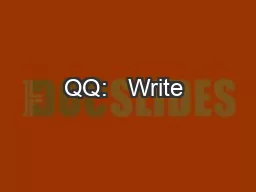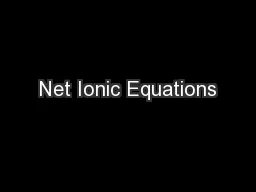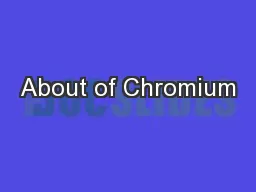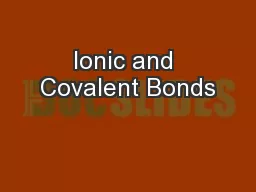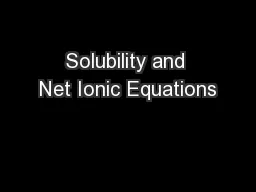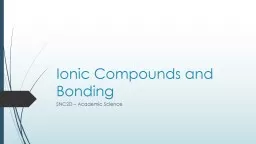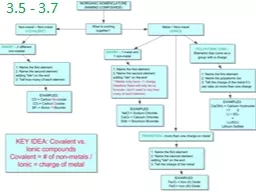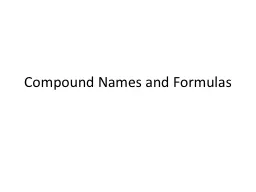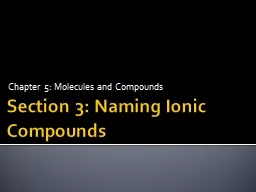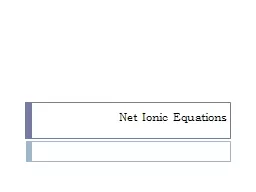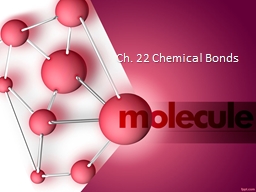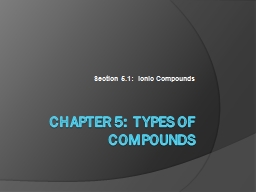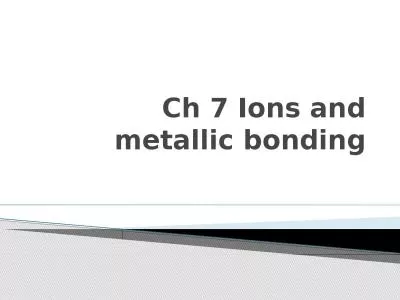PPT-QQ: Write & name the formula of the ionic compound created when a chromium (II)
Author : tatyana-admore | Published Date : 2018-02-08
cation bonds with Bromine Write the formula for goldI sulfide In the ionic compound Co 3 N 2 which cation is present Co II or Co III Ionic Bonds Containing
Presentation Embed Code
Download Presentation
Download Presentation The PPT/PDF document "QQ: Write & name the formula of th..." is the property of its rightful owner. Permission is granted to download and print the materials on this website for personal, non-commercial use only, and to display it on your personal computer provided you do not modify the materials and that you retain all copyright notices contained in the materials. By downloading content from our website, you accept the terms of this agreement.
QQ: Write & name the formula of the ionic compound created when a chromium (II): Transcript
Download Rules Of Document
"QQ: Write & name the formula of the ionic compound created when a chromium (II)"The content belongs to its owner. You may download and print it for personal use, without modification, and keep all copyright notices. By downloading, you agree to these terms.
Related Documents

